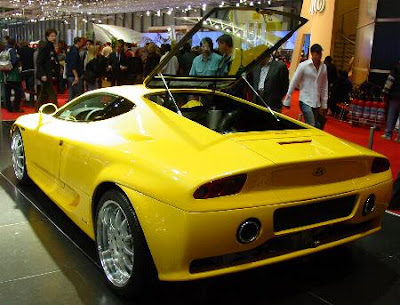
The same thing happened just about this time last year. The feeling was so strong that I had to vent by writing, GOING TOPLESS.
http://maineautomall.blogspot.com/2008/04/going-topless.html
Sure, it’s a year later, but nothing has changed. Oh, the economy is worse, everyone seems depressed, there is a different president, and there is a new landscape developing in the auto industry. Despite it all, the fever hit again this year. When it hits, it’s strong. The fever makes me want to drive. It’s spring fever!
The fever hit today at lunchtime. Like a penned dog, I had to run out the door and into my car. As soon as I heard the rumble of the engine turning over, I felt a little better. But, it wasn’t until I cranked open the sunroof and accelerated, wind blowing and engine revving, did the fever calm. On a nice warm day like this, there is so much to see. They stay bundled up through the winter, but on this first warm day, they all come out to play.
Everywhere I looked, they were beautiful.
 I saw the first one just as I turned the corner. It was a Mazda Miata with its top down. Down the hill and through the light, it was a shiny new Lexus LS. It was time for discipline. Focus on the road, and be safe. No good!
I saw the first one just as I turned the corner. It was a Mazda Miata with its top down. Down the hill and through the light, it was a shiny new Lexus LS. It was time for discipline. Focus on the road, and be safe. No good!  There, right in front of me was a glistening new Cadillac STS. The fever was everywhere, and in everyone, all ages and sizes.The best was yet to come. Chugging casually along the boulevard, it was a beautiful vintage Buick Roadmaster, out of mothballs to celebrate. Everyone shared the fever.
There, right in front of me was a glistening new Cadillac STS. The fever was everywhere, and in everyone, all ages and sizes.The best was yet to come. Chugging casually along the boulevard, it was a beautiful vintage Buick Roadmaster, out of mothballs to celebrate. Everyone shared the fever.Despite all of the distractions, I made it back safely to my parking lot. With the fever now somewhat under control, I was able to absorb with polite reserve the new talent in our parking lot: a Scion XA, a Toyota Versa, a Mazda MX-5, a Scion TC, the Hyundai Santa Fe, and a Honda Civic, all of them special in their own way. All of them would be fun to drive. All of them could quell the fever.
 I love to drive, especially this time of year. I live vicariously through every car of interest that passes. It’s springtime, and when the fever hits, it makes me want to test drive a BMW Z4, or see if I am up to the challenge of a Dodge Viper. Actually, almost any vehicle will do. I just want to drive. I got the fever!
I love to drive, especially this time of year. I live vicariously through every car of interest that passes. It’s springtime, and when the fever hits, it makes me want to test drive a BMW Z4, or see if I am up to the challenge of a Dodge Viper. Actually, almost any vehicle will do. I just want to drive. I got the fever!











































